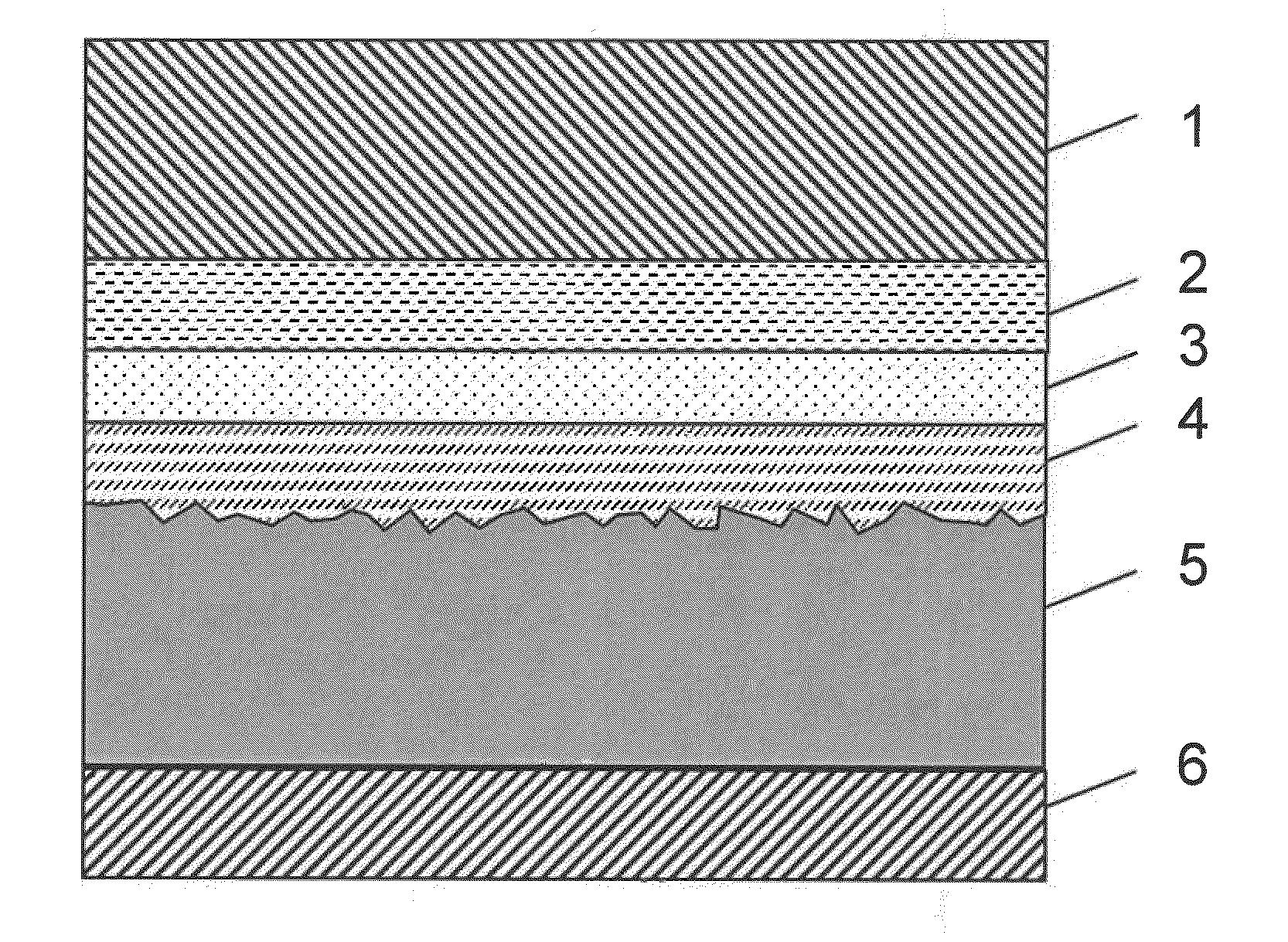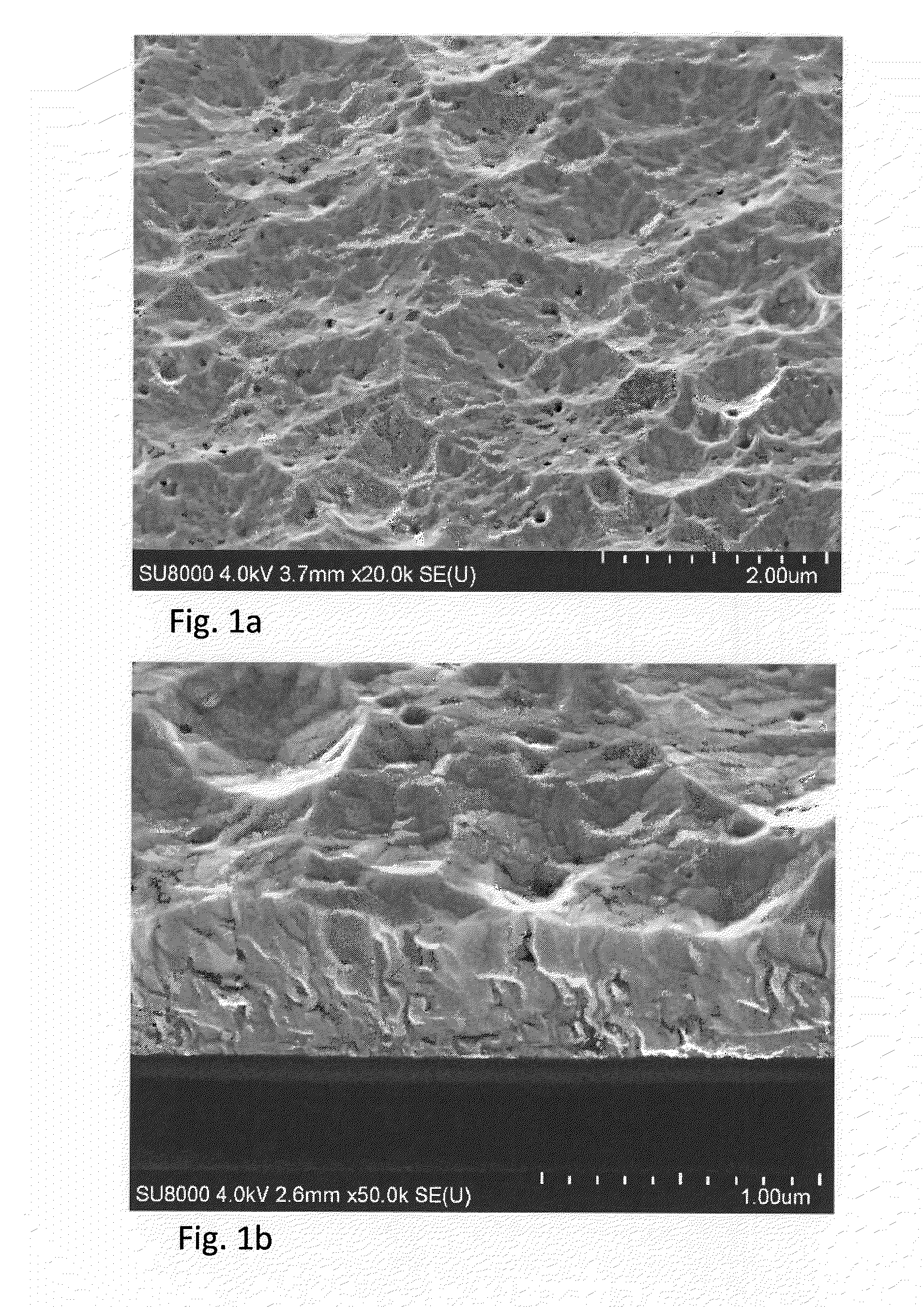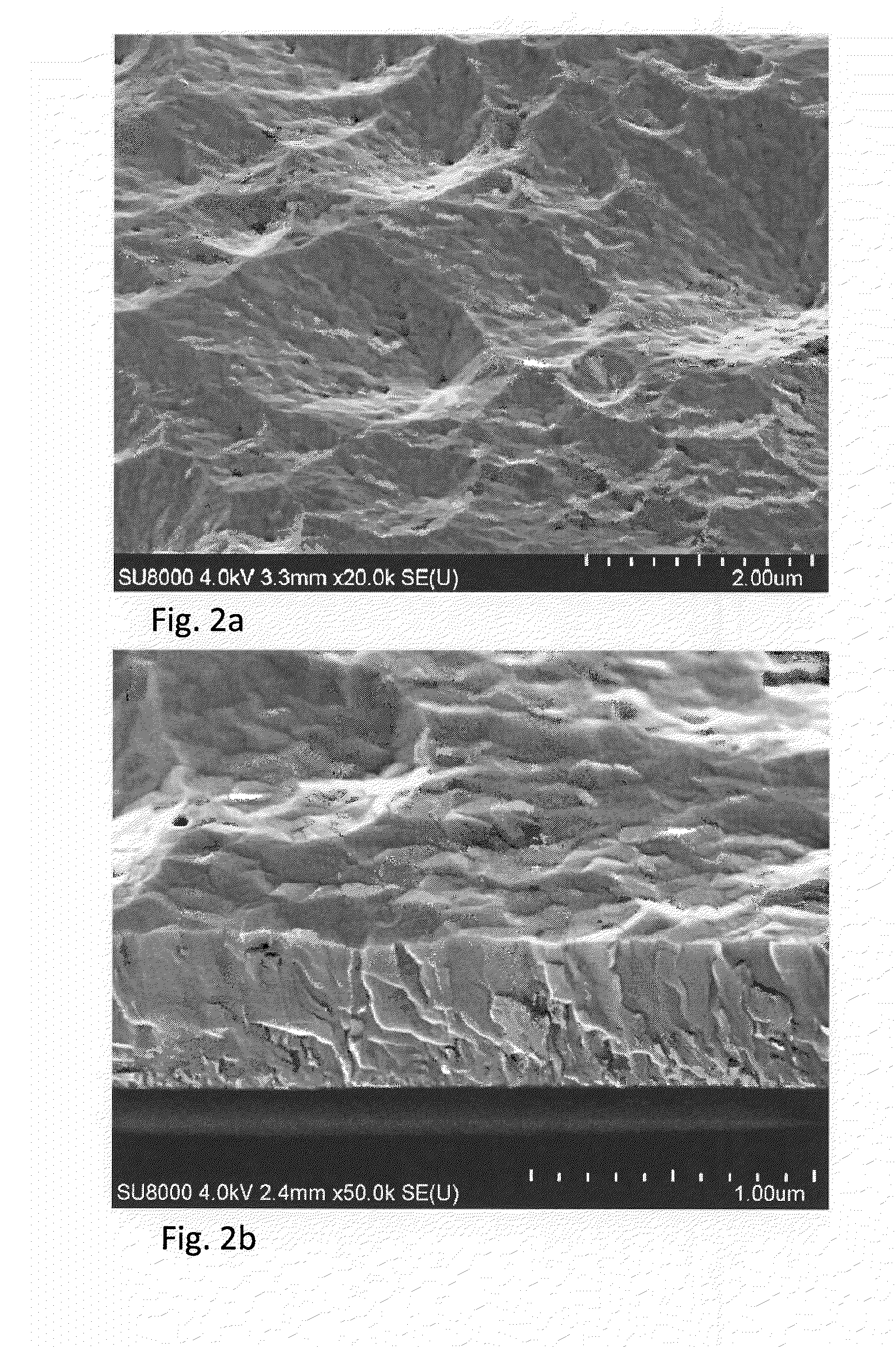Method for depositing a transparent conductive oxide (TCO) film on a substrate and thin-film solar cell
a technology of conductive oxide and substrate, which is applied in the direction of coating, vacuum evaporation coating, semiconductor devices, etc., can solve the problems of large-scale coating efficiency in continuous operation systems, irregular decrease of deposition rate, and process stability problems, so as to achieve significant change in the surface resistance of the tco layer, increase the haze value, and the effect of high haze valu
- Summary
- Abstract
- Description
- Claims
- Application Information
AI Technical Summary
Benefits of technology
Problems solved by technology
Method used
Image
Examples
Embodiment Construction
[0044]Both TCO layers of a similar thickness were deposited on a float glass substrate 1, on a silicon oxynitride barrier layer 2 and a silicon oxyntride seed layer 3. FIG. 1a shows the surface in 20,000-fold magnification and FIG. 1b shows a break through the layer stack in 50,000-fold magnification of the first TCO layer 4 which was deposited on a non-optimised seed layer 3, FIG. 2a and FIG. 2b show similar presentations of the second TCO layer 4 which was deposited on an optimised silicon oxynitride seed layer.
[0045]The directly on the float glass substrate 1 deposited dielectrical barrier layer 2 consists thereby in both instances of in the same conditions deposited sub-stiochiometric silicon oxynitride (SiOxNy). It operates as a barrier layer 2 for diffused sodium ions of the glasses in the layer system. With depositing of this barrier layer 2, the through the glass substrate additionally into the layer system introduced water can be removed from the substrate without this proc...
PUM
| Property | Measurement | Unit |
|---|---|---|
| frequencies | aaaaa | aaaaa |
| temperatures | aaaaa | aaaaa |
| temperatures | aaaaa | aaaaa |
Abstract
Description
Claims
Application Information
 Login to View More
Login to View More - R&D
- Intellectual Property
- Life Sciences
- Materials
- Tech Scout
- Unparalleled Data Quality
- Higher Quality Content
- 60% Fewer Hallucinations
Browse by: Latest US Patents, China's latest patents, Technical Efficacy Thesaurus, Application Domain, Technology Topic, Popular Technical Reports.
© 2025 PatSnap. All rights reserved.Legal|Privacy policy|Modern Slavery Act Transparency Statement|Sitemap|About US| Contact US: help@patsnap.com



